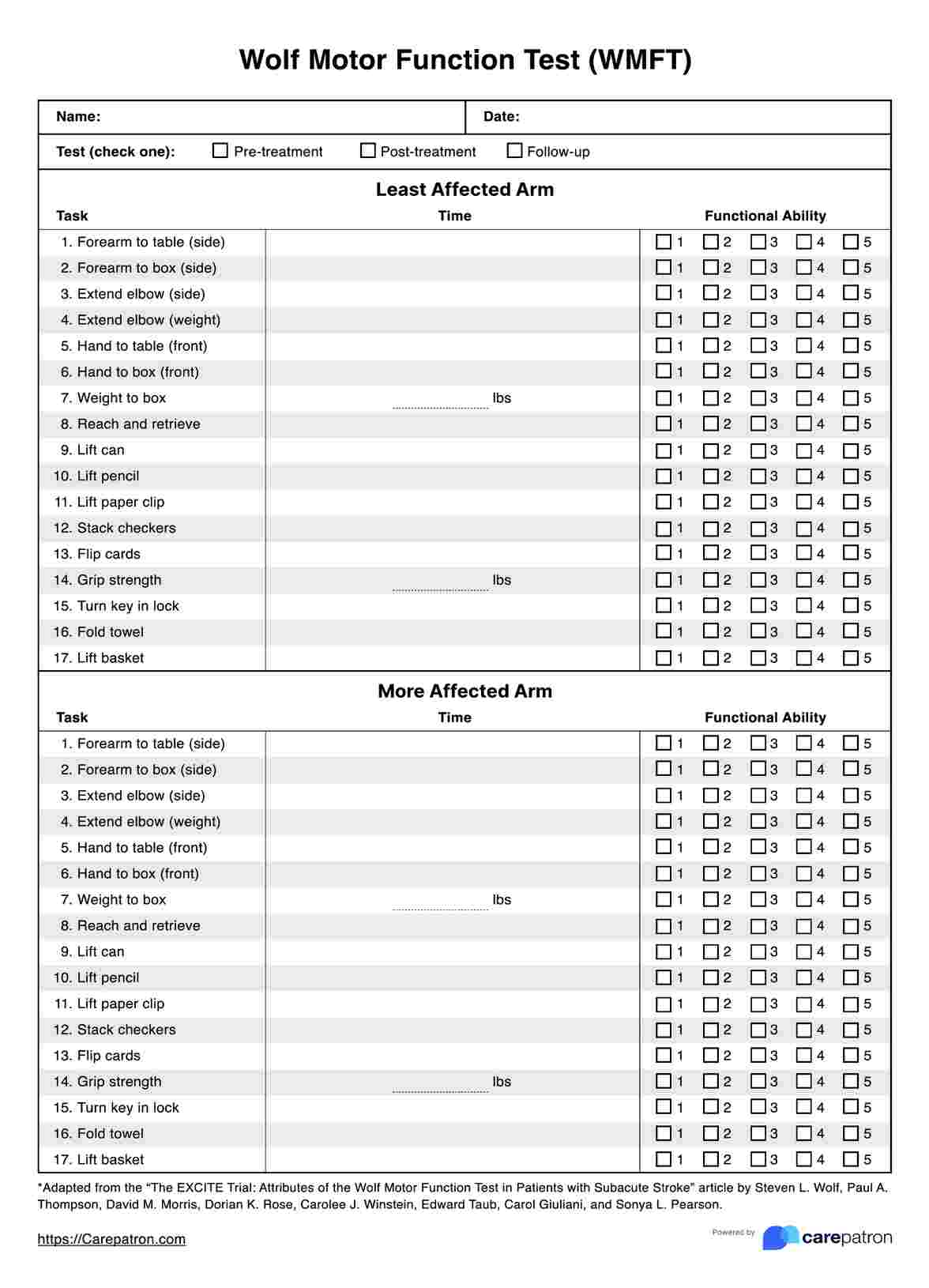It should take between 30 to 35 minutes! Don’t be surprised if it takes longer, though. You are going to be evaluating both upper extremity limbs, after all.

Wolf Motor Function Test (WMFT)
Use the Wolf Motor Function Test (WMFT) to measure the upper extremity (UE) motor abilities of your patient. Recover from injuries, and speed up rehabilitation with this clinically proven method.
Wolf Motor Function Test (WMFT) Template
Commonly asked questions
No. This test should not be self-administered. Only orthopedists, physical therapists, occupational therapists, and adjacent healthcare professionals should administer this because they are highly trained to make educated observations and interpret results.
This test can only be administered to people who can still move their arms. If they have severe spasticity or have amputated arms, then this test can’t be used to assess them. The scope of the test is also limited. It only focuses on the arms. So if you want a comprehensive picture of your patient’s physical condition and capabilities, you are going to need to conduct comprehensive examinations that include other assessments.
EHR and practice management software
Get started for free
*No credit card required
Free
$0/usd
Unlimited clients
Telehealth
1GB of storage
Client portal text
Automated billing and online payments











